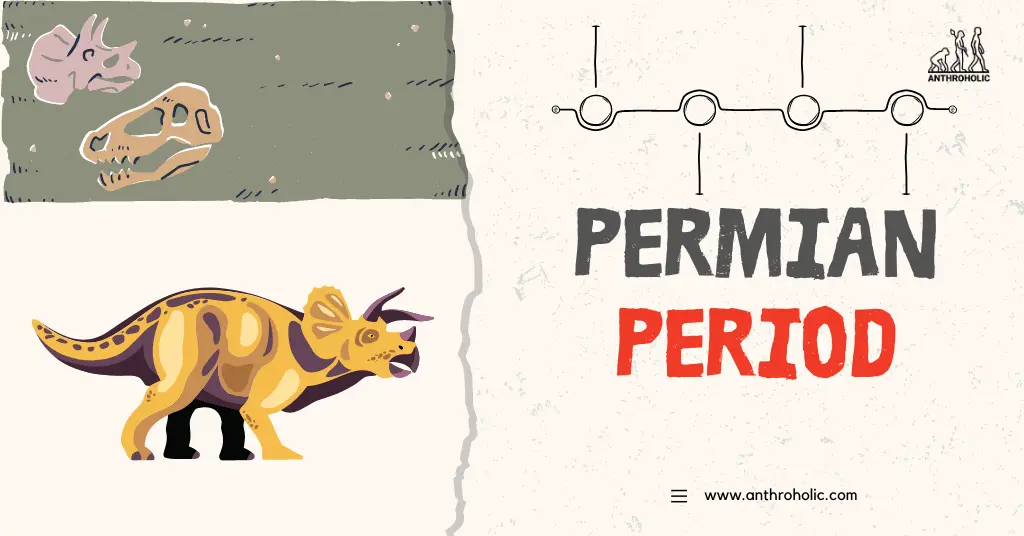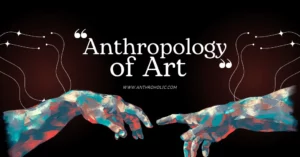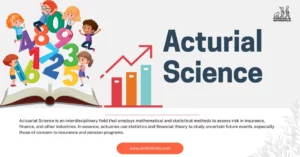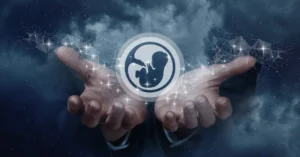AI Answer Evaluation Platform Live Now. Try Free Answer Evaluation Now
Permian Period
The Permian period, occurring approximately 299 to 252 million years ago, signifies the final epoch of the Paleozoic era, pre-dating the Mesozoic era, and is known for its immense biodiversity and the eventual mass extinction event [1].

Geological and Geographical Changes
During the Permian period, the world’s continents combined into a supercontinent named Pangea, surrounded by a global ocean known as Panthalassa [2].
- Continental Drift and Pangea: The formation of Pangea resulted from the continental drift, with the continents converging to form a single landmass. This significant geological change caused climatic shifts and variations in sea levels.
- Panthalassa: The superocean, Panthalassa, surrounded Pangea, with a large sea, Tethys, separating the landmasses of Laurasia and Gondwana within Pangea.
Table 1: Comparison of present-day continents and their Permian equivalents [3]
| Present-day Continent | Permian Equivalent |
|---|---|
| North America | Laurasia |
| Europe & Asia | Laurasia |
| South America, Africa, India, Australia & Antarctica | Gondwana |
Climate and Atmosphere
The Permian period was characterized by a dry and cooling climate, with vast desert landscapes due to Pangea’s size and geography [4].
- Cooling Trend: The merging of continents into a supercontinent led to a decrease in coastal habitats and an increase in inland areas, triggering a cooling trend.
- Declining Carbon Dioxide Levels: The Permian period also saw a decrease in carbon dioxide levels, causing a further drop in temperatures, leading to glaciation at the poles [5].
Permian Life
Despite the harsh conditions, life during the Permian period was incredibly diverse, hosting a wide range of species [6].
Flora
The dominant plant life included seed-bearing gymnosperms, pteridosperms (seed ferns), and glossopteris.
- Gymnosperms: Conifers were the primary gymnosperms during this period, providing ample resources for herbivorous fauna.
- Glossopteris: These seed ferns were especially dominant in the southern continent of Gondwana, exhibiting an adaptation to cold and dry climates.
Fauna
The Permian fauna was a fascinating mix of invertebrates and vertebrates.
- Invertebrates: Among the invertebrates, insects such as beetles and dragonflies were prevalent. The sea was home to diverse marine invertebrates including brachiopods, ammonoids, and crinoids [7].
- Vertebrates: The Permian period saw the rise of the therapsids, a group of synapsids from which mammals would eventually evolve. Reptiles also diversified, giving rise to the first archosaurs, the group containing crocodiles, birds, and dinosaurs.
The Great Permian Mass Extinction
The Permian period ended with the largest mass extinction event in Earth’s history, often referred to as “The Great Dying” [8].
- The Extent of the Catastrophe: Approximately 90% of all marine species and 70% of terrestrial vertebrate species were wiped out [9].
- Possible Causes: Multiple hypotheses exist to explain this catastrophic event, including severe volcanic activity in the Siberian Traps, an asteroid impact, and the release of methane from the sea floor.
Economic Significance of the Permian Period
The Permian period has a significant economic impact due to the vast reserves of coal, gas, and oil that were formed during this time.
Coal Reserves
A substantial amount of the world’s coal reserves were created in the Permian period. Vast forests covered the earth, and the plants, along with other organic matter, were buried and transformed under heat and pressure over millions of years into coal. Gondwana, particularly, is known for extensive coal deposits [10].
Oil and Gas Deposits
The Permian Basin, located in western Texas and southeastern New Mexico, is named after the period and is one of the most productive oil and gas fields in the world. Formed in the Permian period, this region’s rich oil and gas deposits are attributed to the abundant marine life that existed in this era. When these organisms died, their remains were deposited on the ocean floor, which over time, and under intense pressure and heat, transformed into oil and gas [11].
Influence on Modern Science
The Permian period has played a significant role in shaping our understanding of Earth’s history.
Evolutionary Biology
The Permian period’s rich biodiversity has provided scientists with valuable information on evolution. For instance, the therapsids of the Permian period evolved into mammals in the subsequent periods [12]. Also, the extinction event led to the opening of new ecological niches, enabling the diversification of species in the Mesozoic era [13].
Climatology
The climatic conditions of the Permian period, with global cooling and falling CO2 levels, have provided crucial insights into Earth’s climatic past. These insights are valuable in making climate models and understanding potential future climate scenarios [14].
Paleogeography
The assembly of Pangea during the Permian period offers significant insights into the movement of continents, known as plate tectonics. The study of these ancient land formations helps scientists understand geological phenomena like earthquakes, volcanic eruptions, and mountain formation [15].
Conclusion
The Permian period represents a time of significant evolution, continental rearrangement, and unprecedented extinction. The lessons gleaned from studying the Permian continue to provide insights into the current global climatic shifts and potential future trends.
References
[1] Gradstein, F.M., Ogg, J.G., Schmitz, M., Ogg, G. (2012) The Geologic Time Scale. Elsevier.
[2] Scotese, C. (2002). “The Permian: The Rise of the Dinosaurs”. Paleomap Project.
[3] Blakey, R. (2008). “Global Earth History: Paleogeography”. Northern Arizona University.
[4] Parrish, J.T. (1993). “Climate of the supercontinent Pangea”. Journal of Geology.
[5] Berner, R.A. (2006). “GEOCARBSULF: A combined model for Phanerozoic atmospheric O2 and CO2”. Geochimica et Cosmochimica Acta.
[6] Sahney, S., Benton, M.J., Falcon-Lang, H.J. (2010). “Rainforest collapse triggered Carboniferous tetrapod diversification in Euramerica”. Geology.
[7] Kerp, H., Bomfleur, B. (2011). “Photography of plant fossils—New techniques, old tricks”. Review of Palaeobotany and Palynology.
[8] Benton, M.J., Twitchett, R.J. (2003). “How to kill (almost) all life: the end-Permian extinction event”. Trends in Ecology & Evolution.
[9] Erwin, D.H. (2006). “Extinction: How Life on Earth Nearly Ended 250 Million Years Ago”. Princeton University Press.
[10] Thomas, L. (2013). “Coal Geology”. John Wiley & Sons.
[11] Sullivan, P. (2019). “Permian Basin: The largest U.S. oil and gas producing region”. U.S. Energy Information Administration.
[12] Kemp, T.S. (2005). “The Origin and Evolution of Mammals”. Oxford University Press.
[13] Brusatte, S.L., Niedźwiedzki, G., Butler, R.J. (2011). “Footprints pull origin and diversification of dinosaur stem lineage deep into Early Mesozoic”. Proceedings of the Royal Society B.
[14] McElwain, J.C., Punyasena, S.W. (2007). “Mass extinction events and the plant fossil record”. Trends in Ecology & Evolution.
[15] Torsvik, T.H., Cocks, L.R. (2013). “New global palaeogeographical reconstructions for the Early Palaeozoic and their generation”. Geological Society, London, Memoirs.




